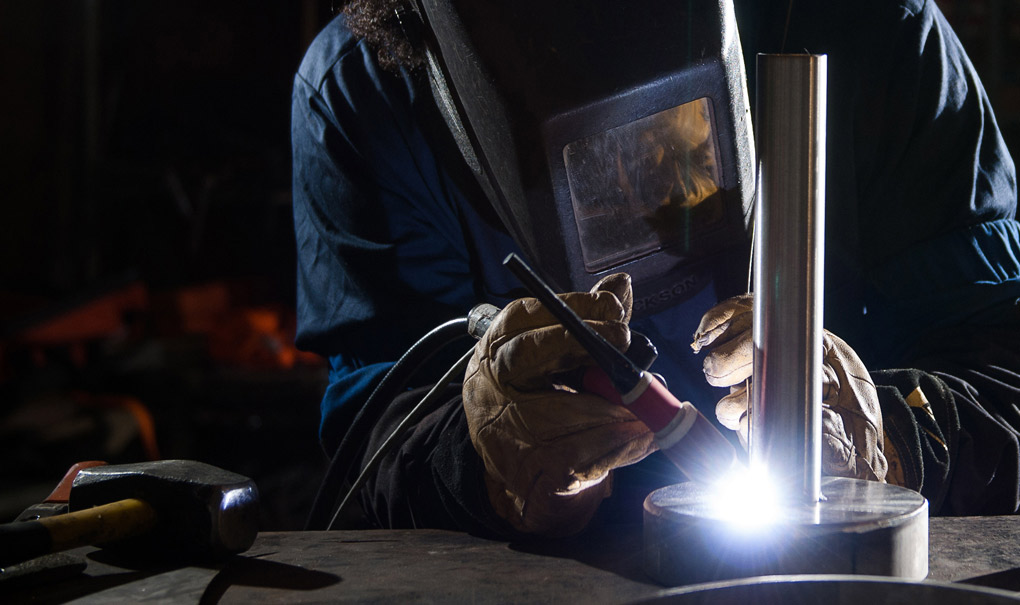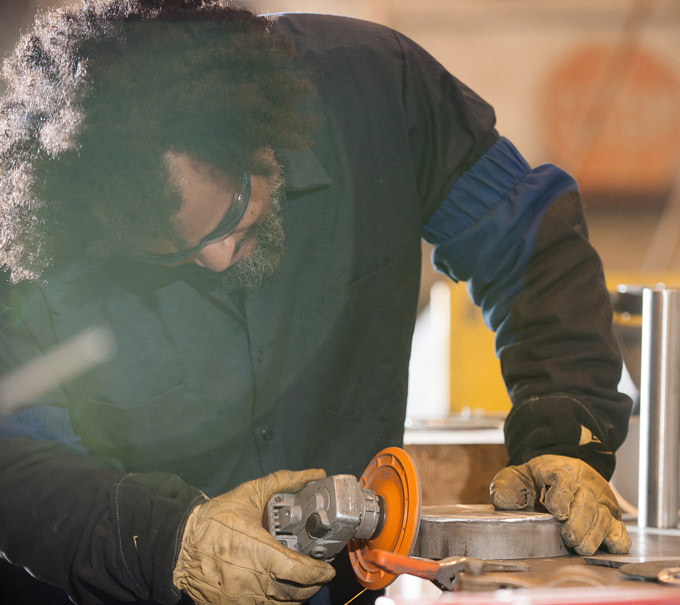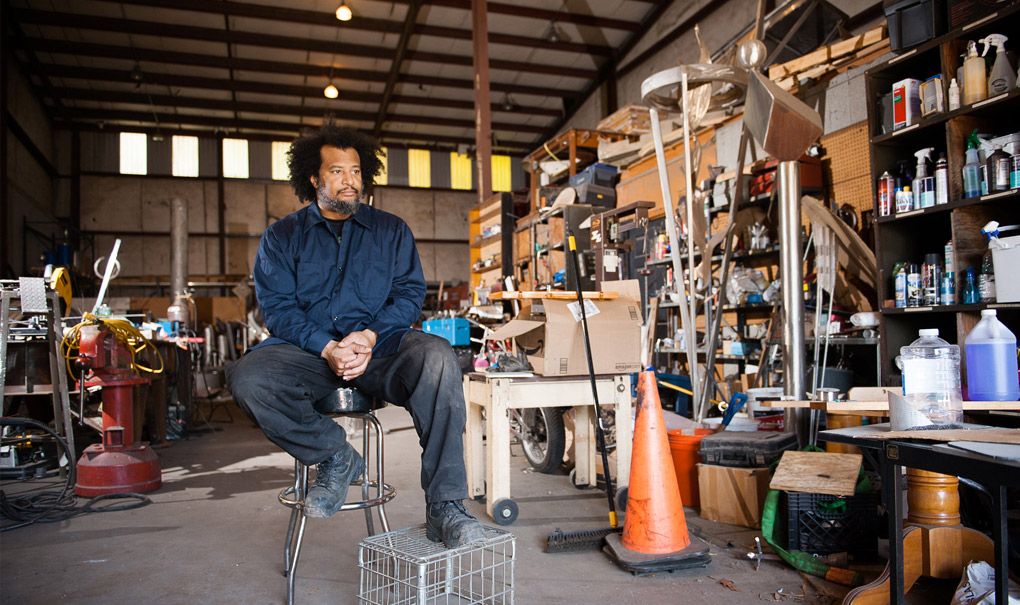
Anything but Un
yield
ing
Every Isaac Duncan sculpture starts as a universe in the palm of his hand, an exploration of how space and form interact, and how we see the world. But it is his vision that takes each piece to its monumental finish.
Sculptor Isaac Duncan creates large-scale, stainless steel pieces that grow out of a drive to challenge the fundamentals of form, space, balance, implied motion and scale. Nonobjective abstractions, the delineation of a thought.
Or, to put it another way: they're autobiographical. In one sense, any sculptor could make this claim, that their work is philosophy made palpable. But for Isaac, both the crafting of a piece and its output strike closer to home, to the heart.
"Steel is difficult to manipulate, you have to know how to work with it just right," he says. "It's also an alloy, a mixture of materials that are processed to create a different type of matter. So am I, as a person of mixed race."
When Isaac talks about his background, his family, his philosophy, and his materials, the words become interchangeable. Similarly, standing in his warehouse-turned studio off of Chattanooga's Main Street, he seems a part of the space — covered in dust, along with the mismatched tables and desks, boxes and tools. An American flag here, a construction cone there. The space feels part hardware store, part garage. And Isaac stands in the center of it all, a T.I.G. torch in his hand.

At a glance, you might think that a free spirit lives in this space, but it only takes a moment to see his formal training shine through. During his studies — BFA from Notre Dame; MFA from the University of Kentucky — Isaac learned to follow a classical sculptor's flow process: sketch, model, actualization.
“When I was in the school of higher learning, there was always that question,” he says. “Is it the concept first, the thought? Is it the model? Is it the sketch, your initial two-dimensional translation from that thought? The last piece is derivative of everything else, so what is the actual art work?”
Taking that question to heart, and wanting to explore where art begins, he stopped sketching, removing it from his process. So he always works in the round — starting with small-scale models, small enough to hold in your hand, exploring how a form interacts with space and viewers might interact with the form, before working to sculptures that are often 20 feet high.
A Duncan piece stands in defiance of the physical limitations we expect from metal.

“I sculpt first, so the idea comes to me in a physical form. The process of sculpture is not Xeroxing. It's having inspiration, it's forever making decisions.”
This control over his own process, whether a project is commissioned or not, has led to a recognizable style. An amalgam of lines and curves, the use of spheres to create a precariousness. Ultimately, an Isaac Duncan piece stands in defiance of the physical limitations we might expect from metal. Because in his work, steel is anything but unyielding.
Some of these commissioned pieces stand in Chattanooga, as public art and in private collections. But as other artists have found, many of his sales come from outside the city.
“The biggest challenge here is that there are not a lot of buyers. Or if there are, the buyers aren't buying from local artists. There are a few galleries, but most shows tend to be artists showing other artists.” The issue is not unique to Chattanooga he says, but he does wtish that there were more opportunities for exposure — particularly for artists who are just starting out. “Never expect to make a living in your hometown; you're appreciated more elsewhere. I came to terms with that, years ago.”
Rather than chase the market, Isaac has built a life in Chattanooga, and says that he would not trade what the city offers. Affordability is one thing; he owns the 11,000 square foot building where he works, as well as the lot next door — and in his line of work, where space dictates how far an artist can push, square footage is precious.
But the city also brings accessibility to a strong and growing community of artists. In fact, it was an artist who drew him to Chattanooga in the first place.
John Henry, a world-renowned sculptor best known for monumental pieces on display in major cities throughout the US, Europe and Asia, hired Isaac to be his crew supervisor at his studio in Chattanooga.
Isaac worked as his right-hand man, and credits this time as shaping his career.
“With a formal education, you get a chance to dabble in different processes. You have a larger toolbox to pull from when creating. Academia is different from the reality of creating a business as well as the knowledge you need to have when dealing with large-scale, monumental sculpture. When you work for a master artist, you're an extension of his arm. It takes a lot of time, and you don't do anything for yourself.”
He opened Duncan Sculpture and Services in 2008, and he freely admits that, at times, it's been a struggle. Paychecks are not consistent, and large-scale art requires extra resources and manpower. But with a calling that he's never questioned, and a family that supports that calling, he keeps looking forward.
“The only way I can do this, is to do it,” he says. “I believe in myself, I believe in what I do, I believe in art. I believe in my artwork. I don't have a choice. It's like breathing.”
